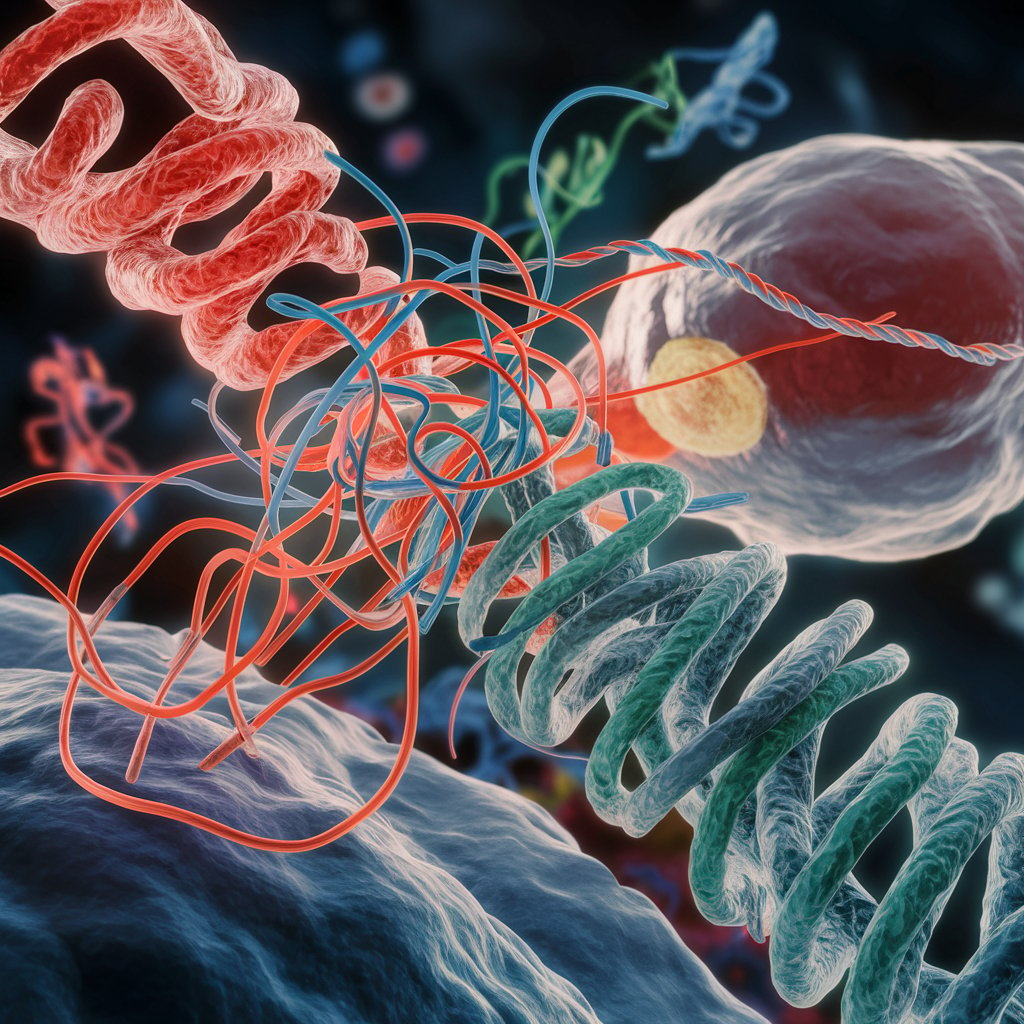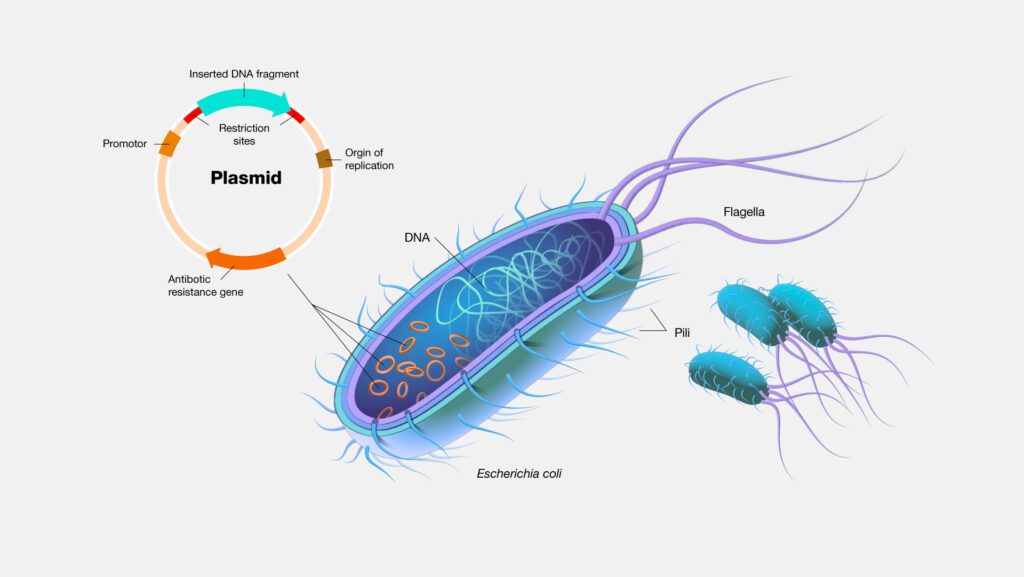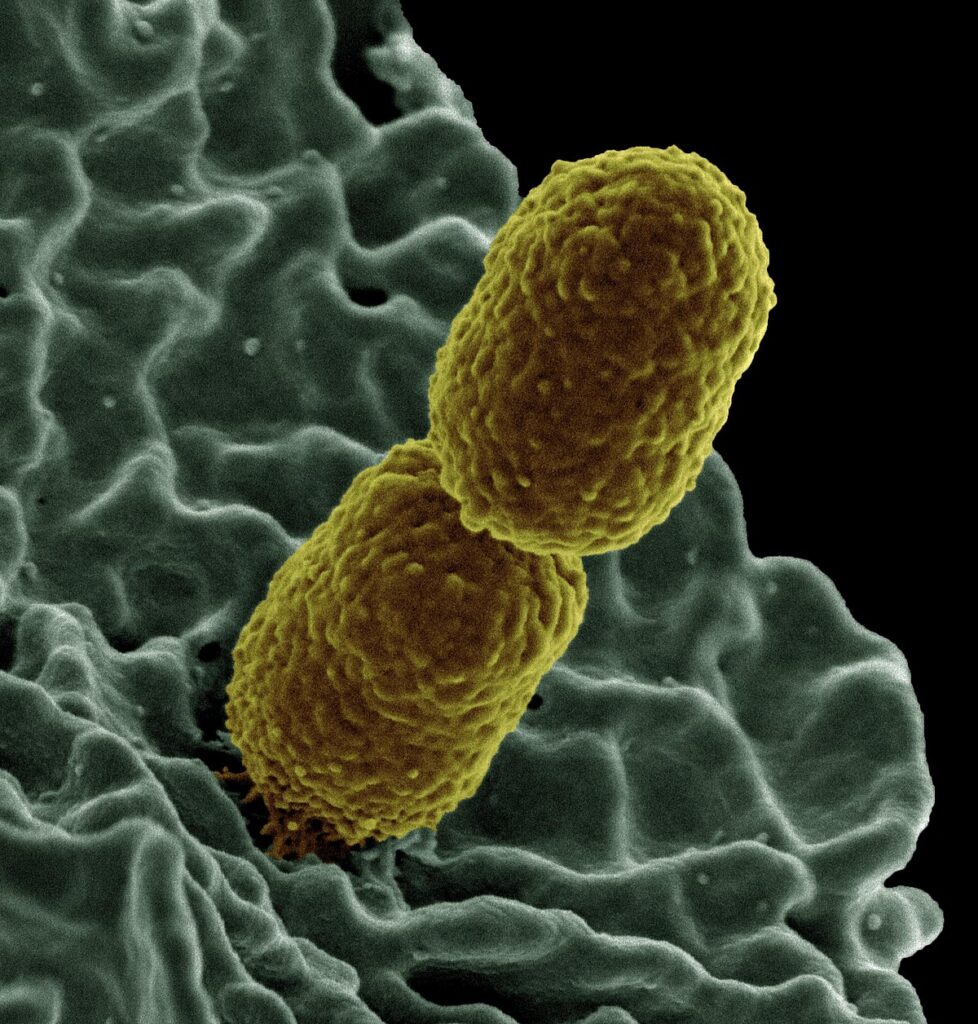What is Plasmid incompatibility ?

Plasmid incompatibility is a phenomenon where two plasmids, despite being able to replicate independently, cannot stably coexist within the same bacterial cell. This is because they share common replication control mechanisms, leading to competition for essential resources like replication machinery and partitioning proteins.
Table of Contents
It is a fascinating phenomenon where two plasmids, despite being present within the same bacterial cell, can’t stably coexist. This seemingly antagonistic relationship arises from the plasmids sharing similar mechanisms for replication, segregation, and maintenance, leading to a struggle for dominance within the cell.

Think of it like this: Imagine two different types of plants trying to grow in the same pot. If their root systems are too similar, they will compete for the same resources and only one will eventually thrive. Plasmids, in a way, do the same.
Here’s a breakdown
Replication Control Mechanisms: Plasmids have dedicated systems to regulate their replication, ensuring they replicate at a controlled rate. These systems often involve genes encoding proteins that:
Bind to specific DNA sequences on the plasmid: These are often called origins of replication (ori).
Regulate the initiation of DNA replication: This ensures that the plasmid replicates only when necessary and avoids excessive copies.
Competition for Resources: When two plasmids with similar control mechanisms are present, they compete for these key components. This can lead to:
Decreased replication of both plasmids: This occurs as they struggle for access to the limited resources.
Loss of one or both plasmids: As the plasmids are unable to maintain stable replication, they are eventually lost from the cell.
Incompatibility Groups: Plasmids are classified into incompatibility groups based on their ability to coexist. Plasmids within the same group are incompatible, meaning they cannot stably coexist. Plasmids from different groups are often compatible.
Understanding plasmid incompatibility is crucial for various applications
Genetic Engineering
Incompatibility can be exploited for controlling the expression of genes and introducing specific traits into bacteria.
Bacterial Evolution

Studying incompatibility helps understand how bacteria evolve and adapt to different environments.
Antimicrobial Resistance
Some plasmids carry genes for antibiotic resistance, and understanding their incompatibility can contribute to developing strategies for combating resistance.
Why is Incompatibility Important?
Gene Transfer and Evolution: Plasmid incompatibility plays a crucial role in shaping bacterial populations by influencing the spread and evolution of antibiotic resistance genes and other beneficial or harmful traits.
Genetic Engineering: Understanding plasmid incompatibility is vital for designing experiments and manipulating bacterial populations in research and biotechnology.
Examples
IncF
This is a well-studied incompatibility group containing several common plasmids used in genetic engineering, such as pUC19 and pBR322.
IncP
This group is known for containing plasmids that are often associated with heavy metal resistance and conjugation.
In summary, plasmid incompatibility is a fundamental principle governing the interaction of plasmids within bacterial cells. This phenomenon has significant implications for bacterial evolution, gene transfer, and biotechnology applications.
Frequently Asked Questions(FAQ)
What is Plasmid incompatibility?
It is a phenomenon where two plasmids, despite being able to replicate independently, cannot stably coexist within the same bacterial cell. This is because they share common replication control mechanisms, leading to competition for essential resources like replication machinery and partitioning proteins.
Why is Incompatibility Important?
It is important,
Gene Transfer and Evolution: Plasmid incompatibility plays a crucial role in shaping bacterial populations by influencing the spread and evolution of antibiotic resistance genes and other beneficial or harmful traits.
Genetic Engineering: Understanding plasmid incompatibility is vital for designing experiments and manipulating bacterial populations in research and biotechnology.
What are the examples of Plasmid incompatibility?
It’s examples are
IncF
This is a well-studied incompatibility group containing several common plasmids used in genetic engineering, such as pUC19 and pBR322.
IncP
This group is known for containing plasmids that are often associated with heavy metal resistance and conjugation.
Related Articles




